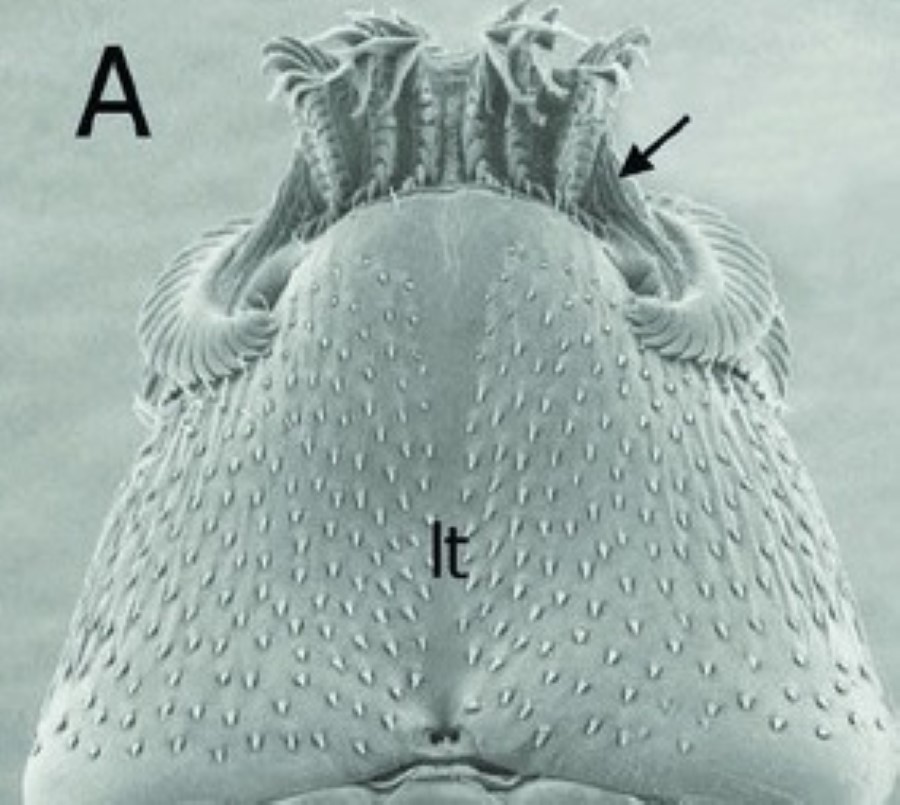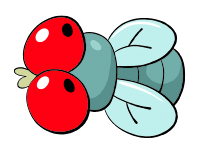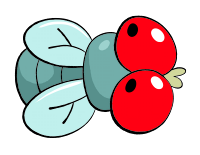FRIDAY THE 13th, SEPTEMBER 2024:
ASCODIPTERON
By Jonathan Wojcik & Rev Storm
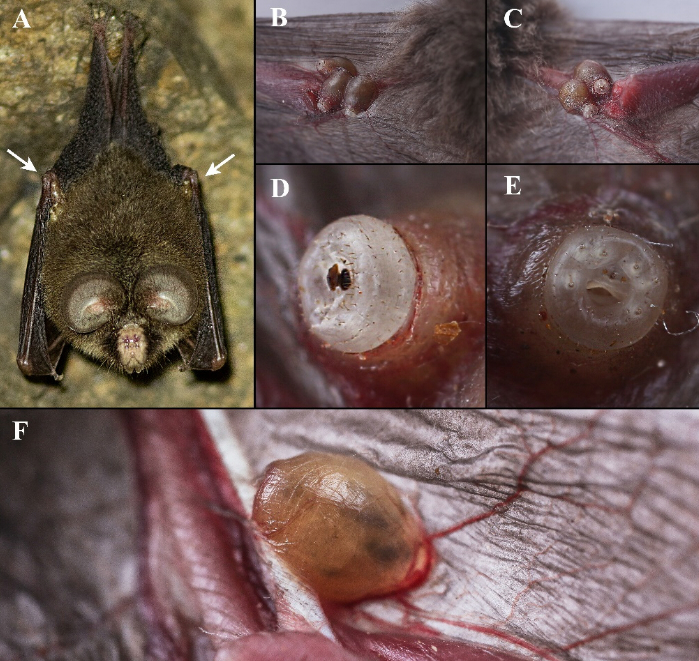
Source
IT'S FLYDAY THE 13TH, a perfect excuse for flyday's 20th entry! Four entire years somehow passed between the 18th entry and the 19th, but it's only been a bit over one year and a few months since entry 19 and today! I'm getting better at this again! So what did I deem SPOOKARIOUS enough for a Friday the 13th entry, here in the midst of my site's Halloween season? Well, we've got some nice juicy images here of a bat with something embedded in its tissues, pale little breathing tubes poking out of lumps in the skin. Many of you must be thinking "AHA! BOTFLIES!", and that's a very well-educated deduction to have made! Epidermal botfly larvae do indeed live just below the host's skin, and have an elongated "snorkel" that helps them breathe.
But that's a perfectly forgivable error, because these are something much more obscure and even more bizarre than botflies, and one that even I didn't know existed until only very recently...
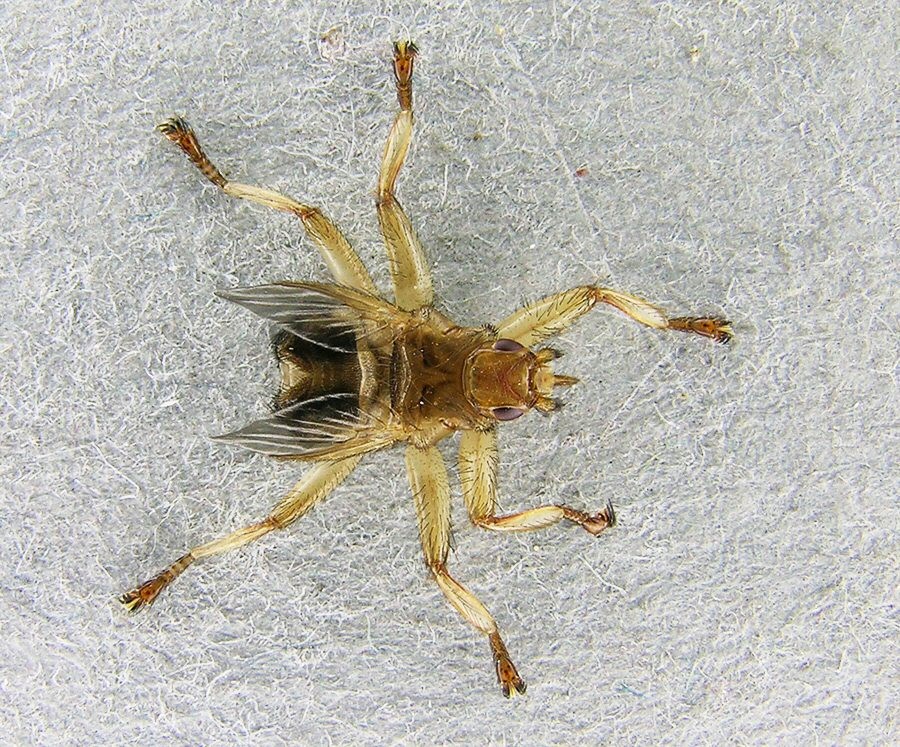
Crataerhina Pallida by Wolfgang Kairat
We've covered two "famous" (relatively speaking) members of the Hippoboscids so far; the sheep keds and the parasitic bat flies. Hippoboscids are a BIG group however, and even the bat flies alone come in almost as many variations as bats themselves...some a little more "varied" than others.

Source
Ascodiptera are a poorly understood genus of bat fly with only 15 described species by the time I ever heard of them, though a couple more have been identified between that joyous day and uploading this article. I'm not going to give a hard number, because what if somoene reads this article right after someone discovers fifty more of them at once? I would sound like a fool.
So they convergently evolved to live just like the larvae of botflies...that's not so weird, is it? They're both flies, after all? But maybe you're already savvy enough to recognize that this little nugget of insect looks nothing at all like a larva. It doesn't necessarily look like a pupa or an adult, either, but it's definitely not a mere maggot. That's because it was the third one. The adult. This is a fully grown fly, not just missing wings and eyes, but missing any trace of limbs, adapted to live out the rest of its life buried in a flying mammal's flesh. How do they get there?!

Source
Asco's are both winged and legged when they first emerge from their pupae, but the female possesses very weird, ultra-modified mouthparts that include a set of specialized blades she will use only once, shedding both her wings and legs as she tunnels into her chosen bat. And when we say weird, ultra-modified mouthparts, you honestly can't even imagine how weird and ultra-modified we're talking about, because I bet you think you know where this insect's "head" is, right? It seems obvious. It's the part shaped like a head, where a head would be, is what you would think.
But, before we continue, let's look at this nice creative commons diagram of a housefly's face by entomologist Giancarlo Dessi:
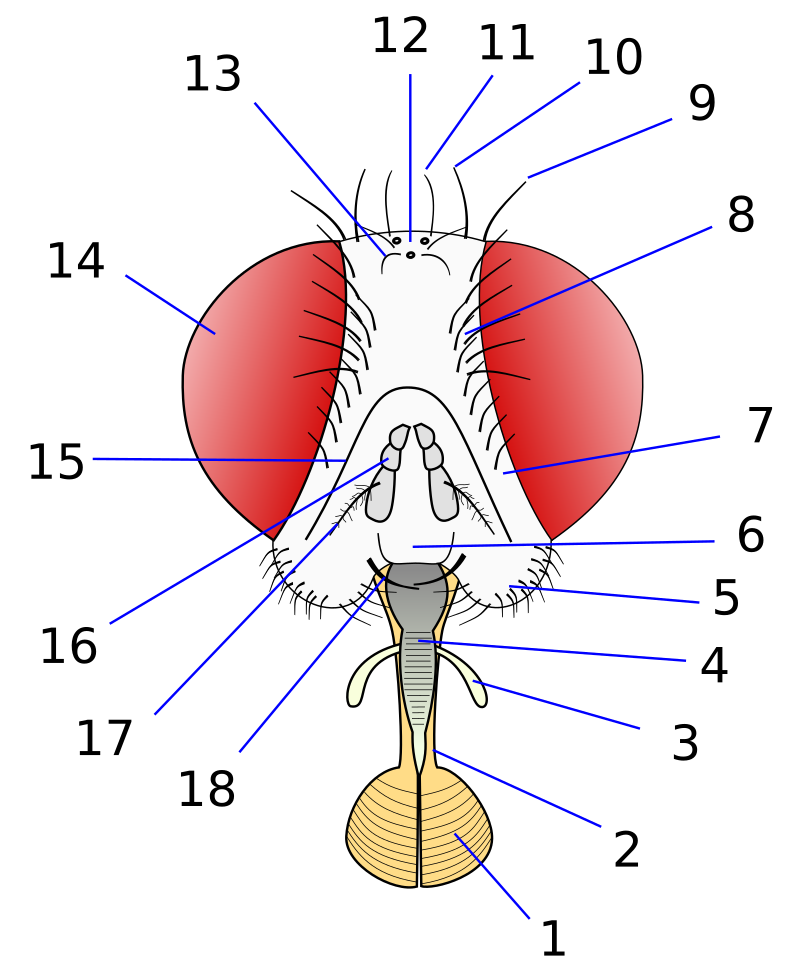
Source
It's them! The "classic" fly! Our special little friend, whom we all as humans naturally adore and cherish in all situations! Oh, how all my fellow human's faces surely light up with the same joy that I do when this whimsical little character lands close enough to see their cute, silly little proboscis pop out and slurp at the dirty ground. Hilarious! And also very normal!
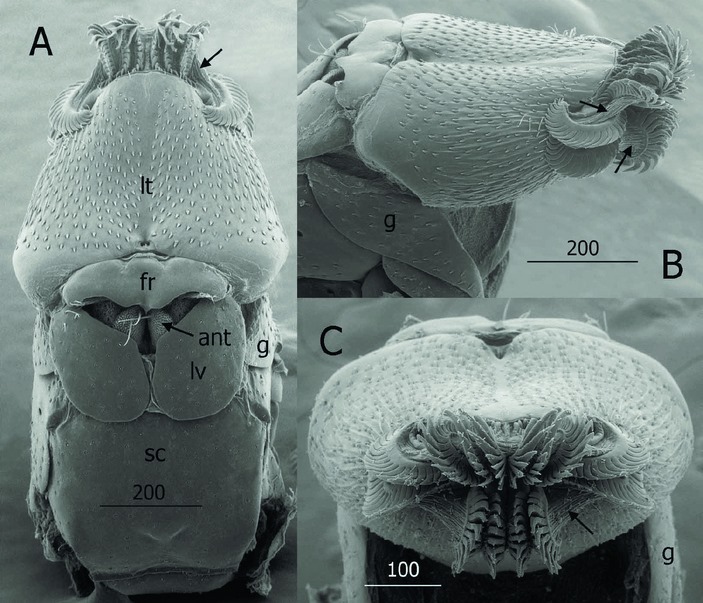
Source
...But here's a scanning electron microscope image of the mature, female Ascodipteron's head, resembling a bristly strawberry with a beautiful, mezmerising array of curling, feathery petals erupting from the end. It's surreal enough when you read it as the head and mouthparts, but as a matter of fact, that's all mouthparts.
THIS is the majority of the insect's "head" anatomy, or what evolution left of it. Those little nubs labeled "ant" are the antennae, and the surrounding featureless panels of chitin would have evidently been the surrounding "face."
This part, the entire giant strawberry thing, is the female's proboscis, not just bigger than the rest of the head but bigger than her thorax and still wider than most of her abdomen. Those curly hypnotic fractal feather things are derivative of the spongy feeding pad on the end of a more normal fly's more normal proboscis, and these are in fact the "blades" we mentioned early. These beautiful fronds are a cluster of organic saws, now officially the single coolest looking thing I have ever, ever in my life seen an animal evolve for the purpose of shredding through flesh.
Anatomically, this is almost as if someone's jaws grew to take over their entire head, while their lips and tongue split apart into a fractal of knives.
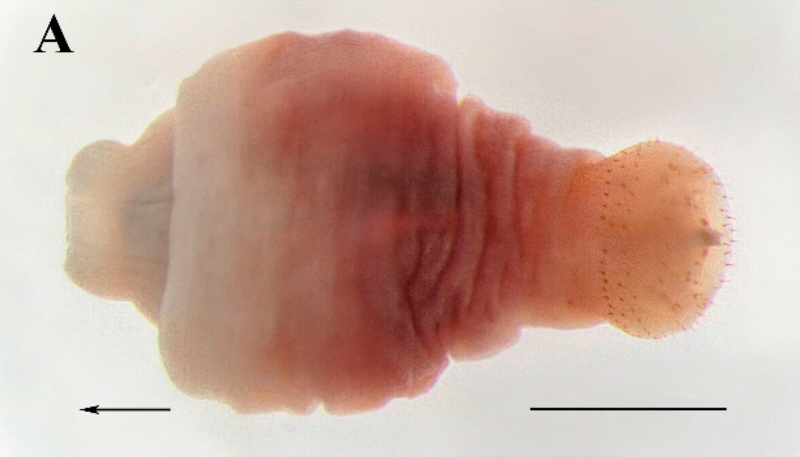
Source
...But you won't really see any of that when you first rudely pluck this little deviant from her host's skin. Instead, you'll find something that actually looks, well, exactly like a botfly larva. Exactly like a fat maggot with a snorkel on the end. Even those tiny, black speckles are anchoring spines shared by the skin-dwelling young of their distant cousins. This whole squishy blob is an extreme overgrowth of the female's abdominal tissues, expanding to completely engulf the rest of her in a cozy little sleeping bag, shielding her from the cruel, vicious defenses of her host's body.
Nestled comfortably inside herself, she will spend the rest of her existence waiting to be fertilized by a male, and like other Hippoboscids, she'll hatch her eggs internally before "birthing" larvae that immediately crawl off to pupate. Until then, like any normal Hippoboscid fly, she'll constantly sustain herself on bloo...wait, what? Hang on, I'm still reading some of these papers as I go along. Oh. Okay. Apparently this genus is a freak among freaks, because once the female is done embedding herself, she never uses her mouthparts ever again. Not for tunneling or feeding. There are, in fact, no blood vessels within reach by the time she's done wrapping herself in her own ass and the host has healed around the intrusion, so despite taking parasitism much further than her almost exclusively blood-drinking genus, she doesn't drink blood. Okay, so what DOES she feed on, and how does she extract it? Hang on while I check again.
Okay.
We actually don't even know.


